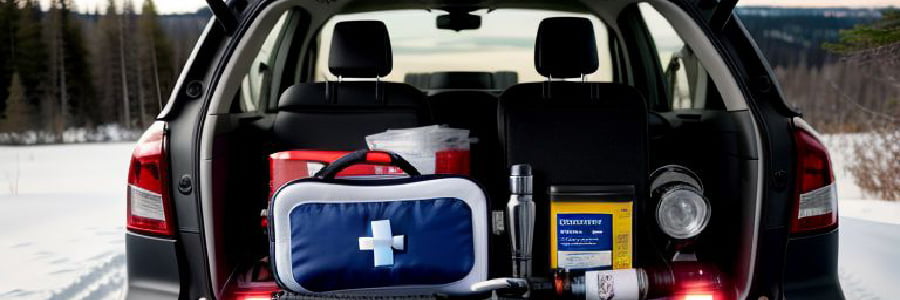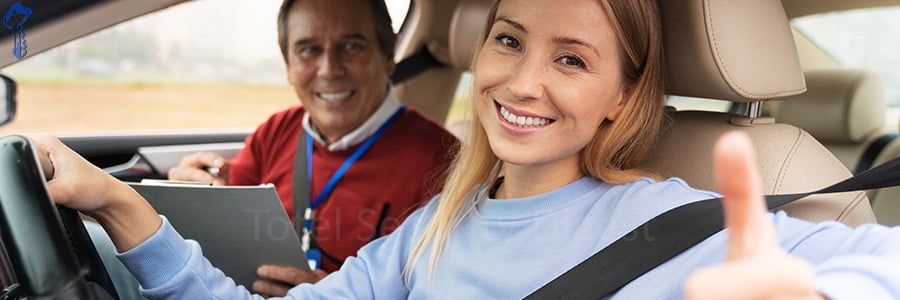Introduction
Family road trips are a cherished tradition, but ensuring the safety of your loved ones on the road is extremely important. When it comes to road safety for families, you can never be too cautious. Whether you’re embarking on a long-distance road trip or simply running errands, understanding the best practices for car seat safety, managing distractions, and preparing for emergencies can significantly enhance your family’s safety and peace of mind.
In this complete guide, we will discuss crucial aspects of road safety for families. From selecting the best car seats for infants to teaching teens safe driving habits, I try to cover everything you need to know to keep your family secure on the road.
Choosing the Right Car Seat for Your Child

Selecting the appropriate car seat is important for ensuring your child’s safety. Take the following factors into consideration when choosing a car seat:
- Age and weight of your child
- Type of vehicle you have
- Your budget
According to the National Highway Traffic Safety Administration (NHTSA) [1], there are four main types of car seats:
- Rear-Facing Car Seats: For infants and toddlers.
- Forward-Facing Car Seats: For toddlers and preschoolers.
- Booster Seats: For school-aged children.
- Seat Belts: For older children and adults.
Always check the manufacturer’s guidelines for weight and height limits when choosing a car seat.
Proper Installation Techniques
Correct installation is vital for the car seat to function effectively. Follow these steps:
- Read the car seat manual and your vehicle’s owner’s manual carefully
- Use either the LATCH system or seat belt to secure the car seat
- Ensure the car seat is tightly installed with minimal movement
- Check the recline angle, especially for rear-facing seats
If you’re unsure about the installation, consider visiting a certified Child Passenger Safety Technician for assistance.
Ensuring the Car Seat is Secure
Once installed, regularly check the car seat’s security:
- Perform the “inch test” – the seat shouldn’t move more than an inch side-to-side or front-to-back
- Check that the harness straps are snug and at the correct height
- Ensure the chest clip is at armpit level
Regularly Checking and Adjusting the Car Seat
As your child grows, you’ll need to make adjustments:
- Check the harness fit frequently
- Adjust the headrest and harness height as needed
- Transition to the next stage of car seat when your child outgrows the current one
Road safety for families starts with proper car seat usage. Stay informed about the latest recommendations and best practices to keep your little ones safe.
Fostering Safe Driving Habits in Teens

As your teens transition from passengers to drivers, teaching them safe driving habits is a critical component of road safety for families. Teens must understand the importance of responsible driving and the real-world consequences of poor habits.
Importance of Setting a Good Example
Teens often mimic their parents’ driving habits, so it’s essential to model safe behavior:
- Always wear your seatbelt
- Obey traffic laws and speed limits
- Avoid distracted driving, such as using your phone while driving
- Remain calm and courteous in challenging traffic situations
Strategies for Educating Teen Drivers
Effective education goes beyond just telling teens what to do. Consider these approaches:
- Engage in open discussions about driving risks and responsibilities.
- Practice driving together in various conditions (e.g., night, rain, highway).
- Use technology, such as driving apps, to monitor and improve driving skills.
- Encourage defensive driving techniques.
- Utilize GDL programs to gradually expose teens to driving, allowing them to gain experience in a controlled manner [2]
- Enroll your teen in a certified driver education program to provide professional instruction and practical experience.
Real-world Consequences of Poor Driving Habits
Help teens understand the potential outcomes of unsafe driving:
- Share real-world examples of accidents caused by distracted or reckless driving to highlight the importance of safe driving habits.
- Discuss the legal and financial consequences of traffic violations.
- Explain how poor driving records can affect insurance rates and job prospects.
Planning Safe and Enjoyable Road Trips

Road trips can be fantastic family bonding experiences, but they require careful planning to ensure road safety for families. Here’s how to make your next family road trip both safe and enjoyable:
Importance of Route Planning and Rest Stops
Proper planning can significantly reduce stress and fatigue:
- Map out your route in advance, including alternate routes.
- Plan regular rest stops every 2-3 hours or 100-200 miles (150-300 km).
- Research safe and family-friendly places to stop along the way.
- Schedule overnight stays for very long trips.
Packing Essential Items for Safety and Comfort
A well-packed car contributes to road safety for families:
- First aid kit and any necessary medications.
- Healthy snacks and water.
- Entertainment for children (books, games, tablets).
- Blankets and pillows for comfort.
- Emergency road kit (jumper cables, flashlight, etc.).
Preparing the Vehicle for Long Trips
Before embarking on your journey, ensure your vehicle is in top condition:
- Schedule a maintenance check-up before the trip.
- Check tire pressure and tread depth.
- Top up all fluids (oil, coolant, windshield washer fluid).
- Test the battery and replace if necessary.
Strategies for Managing Fatigue and Distractions
Long drives can be tiring and full of distractions. Here’s how to manage:
- Share driving responsibilities if possible.
- Take regular breaks to stretch and refresh.
- Use hands-free devices for navigation and communication.
- Engage passengers in conversation to stay alert.
Tackling Backseat Distractions
Managing backseat distractions is a must to ensure road safety for families. Keeping children occupied and content during car rides can help you maintain focus on the road.
Providing Entertainment for Children
- Pack a variety of age-appropriate activities (coloring books, puzzles, small toys).
- Consider using tablets or portable DVD players for longer trips.
- Create travel games that involve looking out the window (e.g., I Spy).
- Prepare a playlist of family-friendly music or audiobooks.
Importance of Setting Rules and Expectations
Establish clear guidelines for behavior in the car:
- Explain the importance of staying seated and wearing seatbelts.
- Set rules about noise levels and physical activities in the car.
- Discuss consequences for breaking these rules.
- Reinforce positive behavior with praise and small rewards.
Strategies for Keeping Kids Occupied
Plan ahead to keep children engaged throughout the journey:
- Pack surprise activity bags to be opened at different points in the trip
- Schedule regular breaks for stretching and burning off energy.
- Encourage quiet activities during potentially stressful driving times (heavy traffic, bad weather).
- Involve older children in navigation or trip planning tasks.
Balancing Attention Between Driving and Backseat Needs
It’s crucial to maintain focus on driving while addressing children’s needs:
- Pull over safely if a child requires immediate attention.
- Use voice commands or hands-free devices if communication is necessary.
- If possible, have another adult or older child assist with backseat needs.
- Consider using a mirror to view the backseat without turning around.
The Vital Role of Regular Breaks on Long Drives

Taking regular breaks during long drives is a crucial aspect of road safety for families. These pauses help combat driver fatigue, while also contributing to a more enjoyable journey for everyone.
Benefits of Taking Breaks for Safety
Regular breaks contribute significantly to road safety for families:
- Reduce driver fatigue and improve alertness.
- Provide opportunities to stretch and prevent muscle stiffness.
- Allow time to check the vehicle and adjust as needed.
- Give a chance to reassess weather and traffic conditions.
Recognizing Signs of Driver Fatigue
It’s crucial to identify fatigue before it becomes dangerous:
- Frequent yawning or blinking.
- Difficulty focusing or keeping eyes open.
- Drifting from your lane or hitting rumble strips.
- Missing exits or traffic signs.
- Feeling restless, irritable, or aggressive.
If you notice these signs, it’s time to take a break or switch drivers if possible.
Planning Rest Stops and Activities
- Aim for a 15-minute break every two hours or 100 miles (150 km).
- Research interesting stops along your route (parks, landmarks, family-friendly restaurants).
- Plan activities for each stop (short walks, picnics, quick games).
Impact on Overall Trip Enjoyment
Regular breaks can turn a long drive into a memorable journey:
- Reduce stress and tension among family members.
- Provide opportunities for family bonding and creating memories.
- Allow time to appreciate the journey, not just the destination.
- Improve overall mood and energy levels.
By prioritizing regular breaks, you’re not only enhancing road safety for families but also creating a more positive travel experience for everyone involved.
The Essential Emergency Kit for Your Car

Always keep a well stocked emergency kit in your car to ensure road safety for families. This kit can be a lifesaver in unexpected situations, from minor inconveniences to major emergencies, like car breakdown in a remote area, getting caught in severe weather, accidents, or getting stranded for any number of reasons.
Essential Items for an Emergency Kit
A comprehensive emergency kit should include:
- First aid kit with bandages, antiseptic wipes, pain relievers, and any necessary prescription medications
- Flashlight and extra batteries
- Jumper cables
- Basic tools (screwdriver, pliers, wrench)
- Duct tape and zip ties for temporary repairs
- Reflective triangles or flares
- Blankets or emergency thermal blankets
- Non-perishable snacks and bottled water
- Car cell phone charger or portable battery pack
- Ice scraper and snow brush (for colder climates)
- Small fire extinguisher (ABC type)
Regularly Updating and Checking the Kit
To ensure your emergency kit is always ready:
- Check expiration dates on food, water, and medications regularly
- Replace batteries in flashlights and other devices annually
- Inspect and replace any damaged or used items
- Update the kit based on seasonal needs (e.g., add warm clothing for winter)
Choosing Family-Friendly Vehicles for Safety and Comfort

Selecting the right vehicle is a major decision for families prioritizing road safety. A family-friendly vehicle should maintain a balance between safety features, comfort, and practicality.
Factors to Consider When Choosing a Vehicle
Keep these points in mind when selecting a family vehicle:
- Size and seating capacity.
- Cargo space for strollers, sports equipment, or luggage.
- Fuel efficiency.
- Ease of installation for car seats and booster seats.
- Accessibility features like sliding doors or low step-in height.
- Safety Ratings
Importance of Safety Features and Ratings
- Look for vehicles with high ratings from the National Highway Traffic Safety Administration (NHTSA) [3] and the Insurance Institute for Highway Safety (IIHS) [4]
- Consider advanced safety features such as:
- Anti-Lock Breaks
- Stability Control
- Multiple Airbags
- Lane Departure Warning
- Blind Spot Detection
- Rearview cameras
- Adaptive cruise control
Benefits of Spacious and Comfortable Interiors
A comfortable interior contributes to road safety for families by reducing distractions:
- Ample legroom and headroom for all passengers.
- Multiple USB ports for charging devices.
- Climate control for all rows of seating.
- Noise-reducing cabin materials for a quieter ride.
- Easy-to-clean upholstery for inevitable spills and messes.
- Ample storage room for luggage and stuff.
Comparing Different Models and Options
Remember, the best family vehicle is one that meets your specific needs without compromising on safety. By carefully considering these factors, you can choose a vehicle that supports road safety for families, and also enhances your overall driving experience. So when researching family vehicles:
- Test drive multiple options to assess comfort and handling
- Compare safety ratings across different models
- Read reviews from other families about real-world experiences
- Consider long-term costs including fuel efficiency, maintenance, and insurance
Essential Steps for Childproofing Your Car
Childproofing your car is about creating a safe environment within your vehicle to prevent accidents and injuries. Let’s explore the key strategies for effectively childproofing your car:
Installing Child Locks and Safety Features
- Activate child safety locks on rear doors to prevent children from opening them while the car is moving.
- Use window locks to prevent children from accidentally opening windows.
- Install sunshades on rear windows to protect children from direct sunlight and reduce glare.
Keeping Harmful Items Out of Reach
- Keep cleaning supplies, tools, and other hazardous materials in the trunk or a locked compartment.
- Store loose items securely to prevent them from becoming projectiles in case of sudden stops.
- Use cargo nets or organizers to keep the trunk tidy and prevent items from shifting during travel.
Importance of Regular Inspections and Adjustments
Maintain a safe environment through routine checks:
- Regularly inspect car seats and booster seats for wear and tear.
- Check that all seat belts are functioning properly.
- Ensure airbags are working correctly and that children are seated in appropriate locations.
Strategies for Maintaining a Safe Environment
Implement these additional safety measures:
- Use seat belt positioners for older children to ensure proper fit
- Consider installing a rear-seat entertainment system to keep children occupied and reduce distractions for the driver
- Use removable window clings or decals to indicate the presence of children in the car for emergency responders
By implementing these childproofing strategies, you’re taking proactive steps to enhance road safety for families. Remember, a safe car environment contributes to a more relaxed and enjoyable travel experience for everyone.
Navigating Safe Driving During Holidays
Holiday travel can present unique challenges for road safety for families. With increased traffic, potentially hazardous weather conditions, and heightened stress levels, it’s always better to take extra precautions.
Importance of Planning and Preparation
Proper planning can significantly reduce holiday travel stress:
- Plan your route in advance, considering potential traffic hotspots.
- Check weather forecasts and road conditions before departing.
- Schedule your trip during off-peak hours if possible.
- Ensure your vehicle is in good condition with a pre-trip inspection.
Managing Increased Traffic and Road Conditions
- Allow extra time for your journey to avoid rushing.
- Use traffic apps to stay informed about congestion and accidents.
- Be prepared for sudden stops in heavy traffic.
Strategies for Staying Calm and Patient
Maintaining composure is crucial for road safety for families:
- Practice deep breathing exercises if you feel stressed.
- Take regular breaks to stretch and relax.
- Use calming music or audiobooks to create a peaceful atmosphere.
- Remind yourself that arriving safely is more important than arriving quickly.
Ensuring the Safety and Enjoyment During the Trip
Make your holiday journey both safe and memorable:
- It is always a good idea to pack plenty of snacks and drinks.
- Reduce distractions by preparing entertainment options for children.
- If your schedule allows it, choose less busy days for travelling.
- Make the journey part of the holiday experience with fun stops along the way.
The Critical Impact of Parental Modeling on Safe Driving

Parents play a defining role in shaping their children’s future driving habits. The way we drive reflects profoundly on our children’s understanding of road safety. Therefore, it is up to us the set the right example.
Importance of Setting a Good Example
Children are keen observers, especially of their parents’ behavior:
- Always wear your seatbelt and ensure all passengers do the same.
- Obey traffic laws, including speed limits and traffic signals.
- Avoid aggressive driving behaviors like tailgating or road rage.
- Never use your phone while driving.
By making sure that you adopt these safe driving practices, you’re reinforcing the importance of road safety for families through your actions.
Strategies for Teaching and Reinforcing Safe Habits
Effective teaching goes beyond just showing good behavior:
- Narrate your safe driving decisions as you make them.
- Discuss potential hazards and how to avoid them while driving.
- Encourage questions about driving and traffic rules.
- Use everyday driving situations as learning opportunities.
Impact of Parental Behavior on Children’s Driving
A study by the University of Michigan Transportation Research Institute found that children whose parents had three or more violations were 38% more likely to have had a violation compared with children whose parents had none[5].
Encouraging Open Communication About Driving Safety
Create an environment where discussing road safety is normal:
- Have regular conversations about driving safety with your children.
- Discuss news stories related to traffic accidents and their causes.
- Encourage your children to speak up if they ever feel unsafe in a car.
- Be open to feedback about your own driving from your family members.
Conclusion
Road safety in children is not a straightforward matter but is rather, like everything involving families and home life, complex. From making sure our littlest passengers are buckled properly and at the correct height in their car seats, to showing our teenagers what safe driving behaviors look like — it’s about creating a culture of safety within your family. It’s about making conscious decisions every time you get behind the wheel, whether you’re driving to the grocery store or embarking on a cross-country adventure. And ultimately, following the ins and outs of vacation road trip planning (like how to plan safe routes for 9 great kid-friendly road trips to managing backseat distractions) can help cut overall driving risks.
As we conclude, I encourage you to take action. Review your current driving habits and family travel practices. Implement the safety measures we’ve discussed, and make road safety a regular topic of conversation in your household. By doing so, you’re not just enhancing your family’s safety; you’re also setting a powerful example for future generations of drivers.
Let’s commit to making every journey, no matter how short or long, a safe one. After all, when it comes to road safety for families, there’s no such thing as being too careful. Safe travels!
References
1. National Highway Traffic Safety Administration (NHTSA): Car Seats and Booster Seats
2. AAA Foundation: Orientation Sessions for Parents of Young Novice Drivers
3. National Highway Traffic Safety Administration (NHTSA): NHTSA Announces Model Year 2024 Vehicles To Be Included In 5-Star Safety Ratings Tests
4. Insurance Institute for Highway Safety (IIHS): Vehicle Ratings
5. Ferguson, Susan & Williams, Allan & Chapline, Janella & Reinfurt, Donald & De Leonardis, Doreen. (2001). Relationship of parent driving records to the driving records of their children. Accident; analysis and prevention. 33. 229-34. 10.1016/S0001-4575(00)00036-1.
Discover more from Total Security Digest
Subscribe to get the latest posts sent to your email.
This is a very good article on a new and untouched topic. I am also sharing this article on my social media accounts so that more people can benefit from it.
Thank you